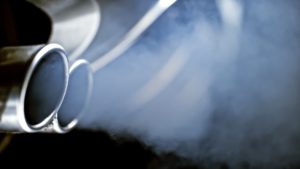Exhaust System 101
Your vehicle’s exhaust system is most likely one of those things you don’t think about – or even notice – until something goes wrong.
If your engine was 100% efficient, it would combust every ounce of fuel it’s supplied with and turn all of its gas into power. But because no engine is perfect, leftover fuel is left behind in the form of exhaust.
The exhaust system is made up of your vehicle’s catalytic converter, exhaust manifold, muffler, and pipes – all designed to move the waste from your engine out of the vehicle. Each component in the system has a specific job and is designed to safely rid dangerous chemicals and fumes from your engine:
Exhaust Components
Exhaust Manifold – This component connects to the engine and begins the flow of exhaust through the pipes and system components.
Catalytic Converter – Exhaust is, in simplest terms, pollution. The catalytic converter burns off and removes up to 90 percent of the toxins in your engine’s exhaust.
Muffler – The muffler and resonator address engine sound. Most work to reduce the noise to keep your car running as quietly as possible.
Pipes – Once it has journeyed through the above components, exhaust travels through remaining pipes to exit the vehicle. This process also cools the fumes.
Exhaust Maintenance
Like every system in your vehicle, the pipes and exhaust components undergo wear and tear over time. The harsh chemicals in the exhaust itself can degrade the system’s interior while road debris and corrosion cab cause damage to its exterior.
Corrosion or loose connections can sometimes create leaks in your system. If you have a leak, you’ll likely know right away from warning signs like loud cracking noises or distinct odor emanation.
Be sure to contact our team of ASE-certified technicians by clicking HERE if you notice any issues with your exhaust system or if you have any other questions/concerns regarding your vehicle’s health!


